The best food in the Czech Republic is a celebration of traditional recipes and rustic fare. In summary of what to expect from Czech cuisine, the focus lies on the balancing of contrasting flavors and textures.
Rich meat dishes are paired with tangy sauerkraut, while heavy, savory sauces are offset by pillowy bread dumplings. Main courses are often accompanied by a refreshing pint of Pilsner beer and rounded off by devilishly sweet pastries.
From traditional dishes to signature drinks, here’s our list of the best food in the Czech Republic.
Jump to a section of this article
An Overview of Food in The Czech Republic
For those familiar with other Central European countries, you will encounter similarities between Czechia’s gastronomy and its neighboring Germany, Hungary, Austria, and Slovakia. While the influence is undeniable, the Czech Republic has adapted recipes to reflect native ingredients and local palates.
Staple ingredients of traditional Czech food include pork, beef, potatoes, cabbage, and root vegetables. Many popular main dishes in the Czech Republic are slow-cooked or stewed to extract deep flavor. For that reason, and considering the brisk winters, soups also play a vital role in the nation’s local food scene.
At its heart, traditional Czech cuisine is a mirror of the country’s soul: unpretentious, generous, and overflowing with character.
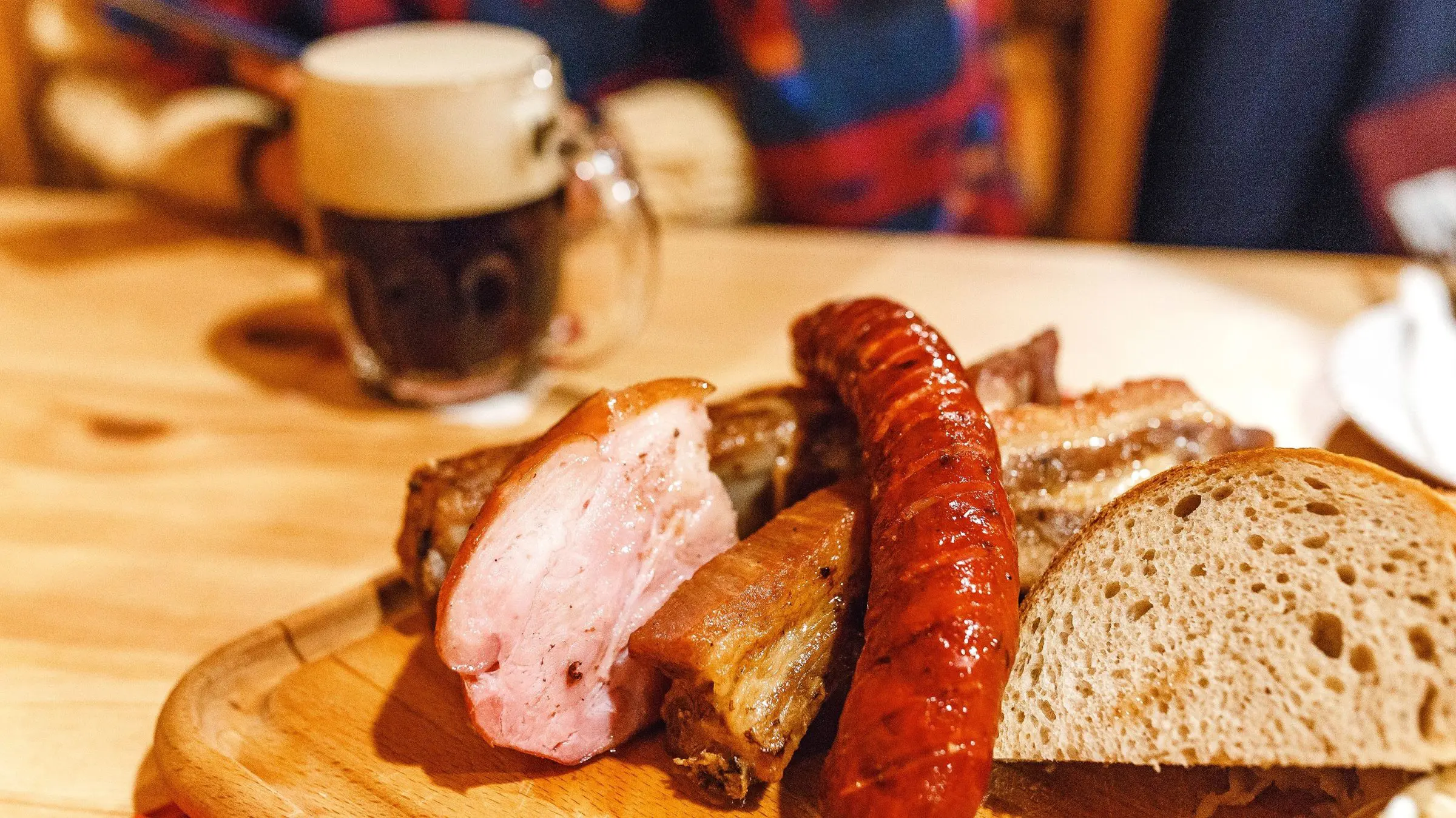
The Best Food in The Czech Republic
Traditional Czech dishes are best enjoyed in a hospoda. Hospody are pubs where comfort food and hearty fare are served alongside Czech beer in a cheerful environment. Here is what to eat in the Czech Republic.
1. Vepřo Knedlo Zelo (Roast Pork With Dumplings & Sauerkraut)
Vepro Knedlo Zelo is considered to be the Czech Republic’s national dish. This delicious meal features succulent roast pork (Veprove) served with two staples of the Czech kitchen: Knedliky (Czech bread dumplings) and Zeli (Czech sauerkraut).
The pork is usually seasoned with caraway seeds and garlic before being slow-roasted until it has a crispy exterior and tender interior.
Satisfying and comforting, Vepro Knedlo Zelo (pronounced vehp-sho knehd-loh zeh-loh) has deep ties with the country’s identity. It originated from rural Bohemia, where pork has long been a staple of peasant diets.
Steamed dumplings, a classic side dish, helped ration meat portions, whereas sauerkraut preserved vegetables through long, harsh winters.
Today, Vepro Knedlo Zelo is widely available in restaurants and pubs throughout the country and remains a cornerstone at the family dinner table. Its potent flavors, rich heritage, and simple ingredients capture the essence of Czech cooking, and it also pairs perfectly with a cold pint of Czech lager.
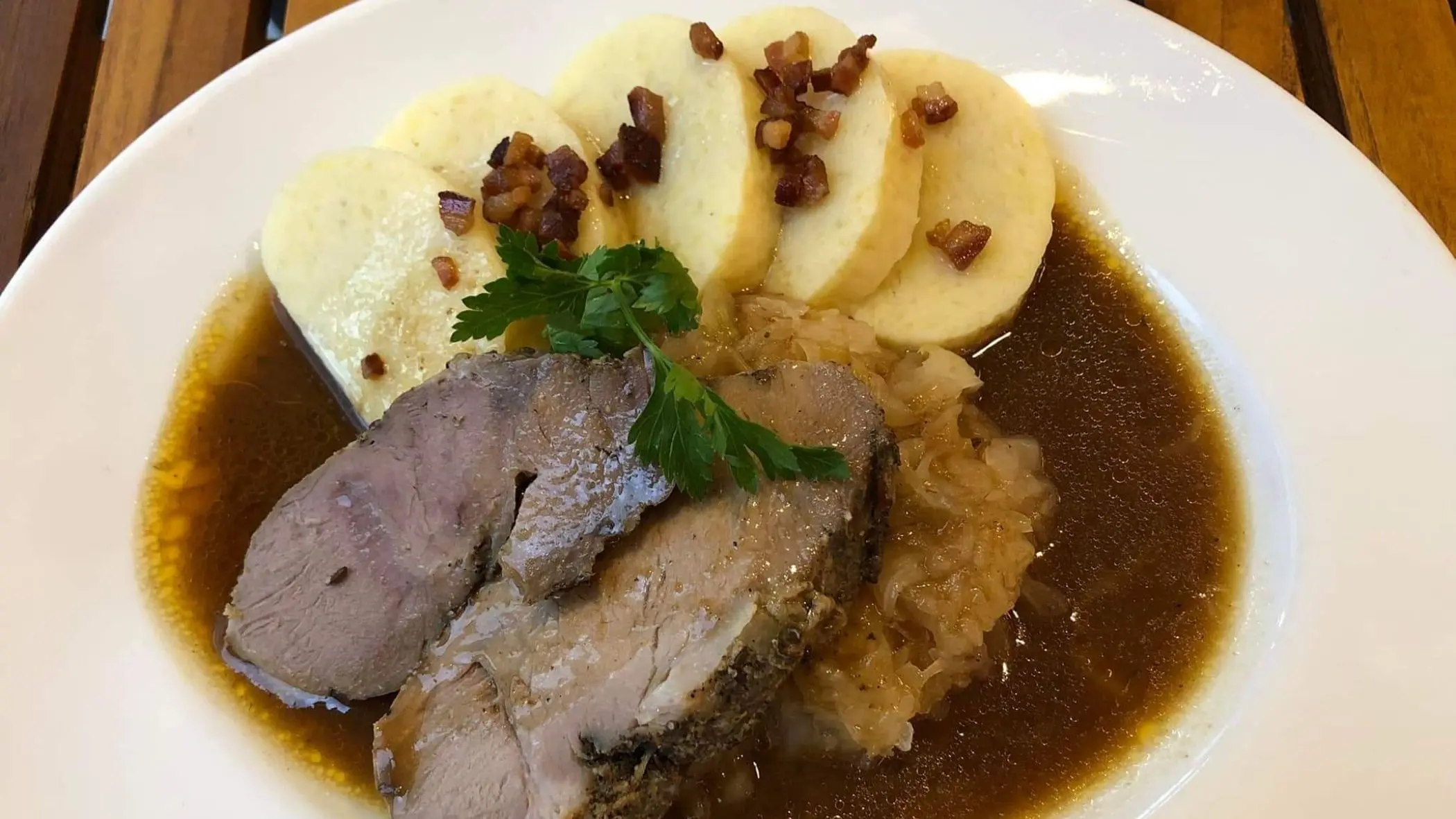
2. Knedlíky (Czech Dumplings)
Knedliky (knehd-lee-kee) is one of the most traditional side dishes of Czech cuisine. These boiled dumplings come in two varieties: bread dumplings (Houskove Knedliky) and potato dumplings (Bramborove Knedliky).
The former are made from flour, milk, eggs, and cubes of stale bread, whereas the latter is sometimes filled with smoked meat. Both types may be served with sauces or stews, acting as a sponge for gravies.
The origins of Knedliky trace back to peasant kitchens, when dumplings were one of the cheapest ways to bulk out meals and stretch out a portion of meat. Making them from scratch is a point of pride to many Czechs, and nearly every region has its own slight variation on cooking styles.
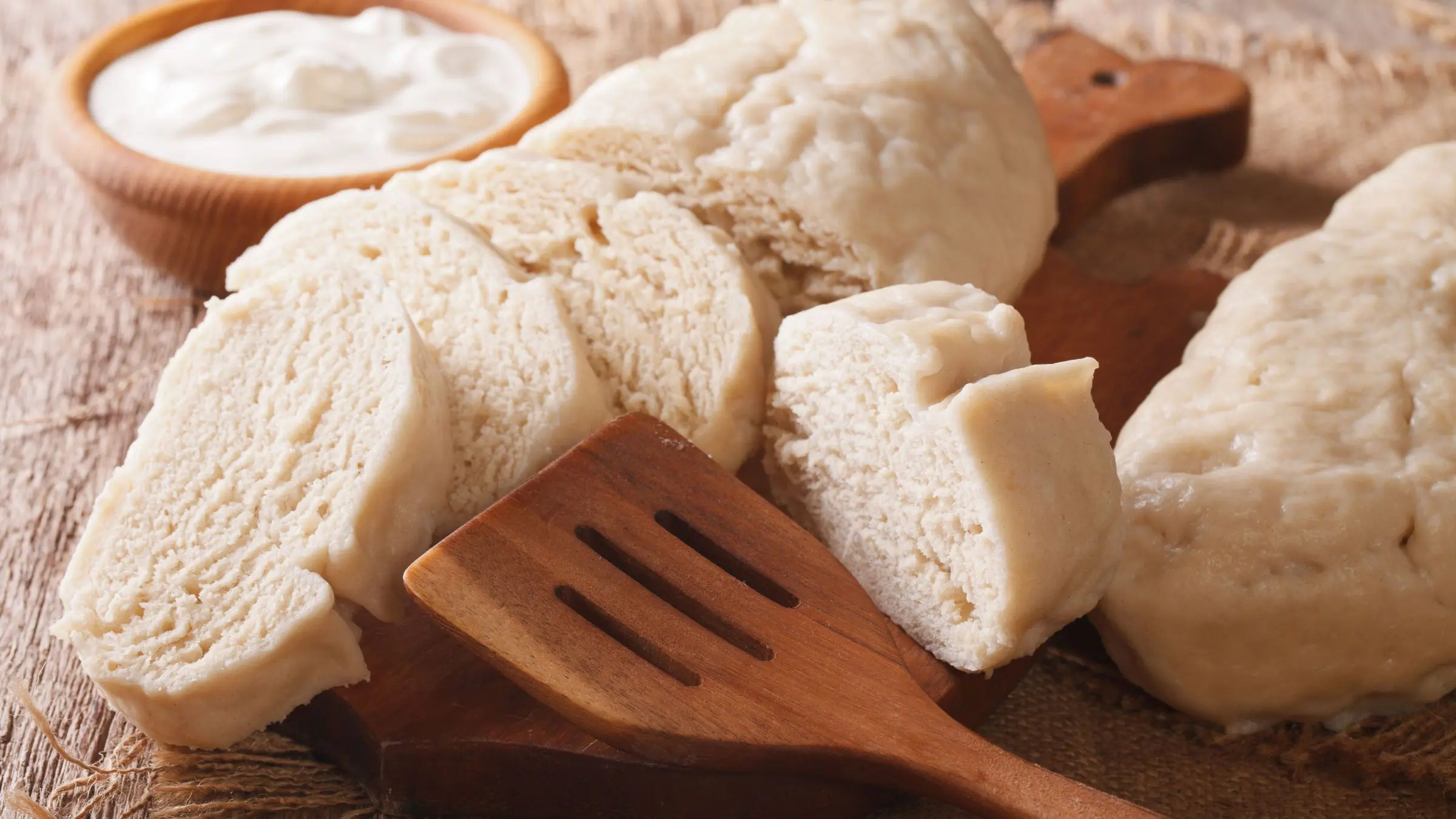
3. Svíčková Na Smetaně (Marinated Beef Sirloin in Cream Sauce)
Typically served at family gatherings and celebrations, Svickova Na Smetane is one of the Czech Republic’s most iconic dishes.
This plate consists of slow-cooked beef sirloin in a vegetable-based sauce made from heavy cream, onions, parsley, celery roots, carrots, and bay leaves. Crucially, the sauce is prepared with roux (known as Jiska in Czech), which gives it a heavier texture.
Svickova refers to the cut of beef, whereas Na Smetane means with cream. The beauty of this famous Czech meal comes from its lengthy and considered cooking method; the meat is left to slowly cook in the creamy sauce until it’s deliciously tender.
It is traditionally accompanied by Houskove Knedliky, a dab of cranberry sauce, and a slice of lemon.
Pronounced sveech-ko-vah nah smeh-tah-nyeh, Svickova Na Smetane originates from Bohemia and is prevalent in Prague. Known simply as Svickova, the unhurried preparation method has made this popular dish symbolic of Czech culinary heritage.
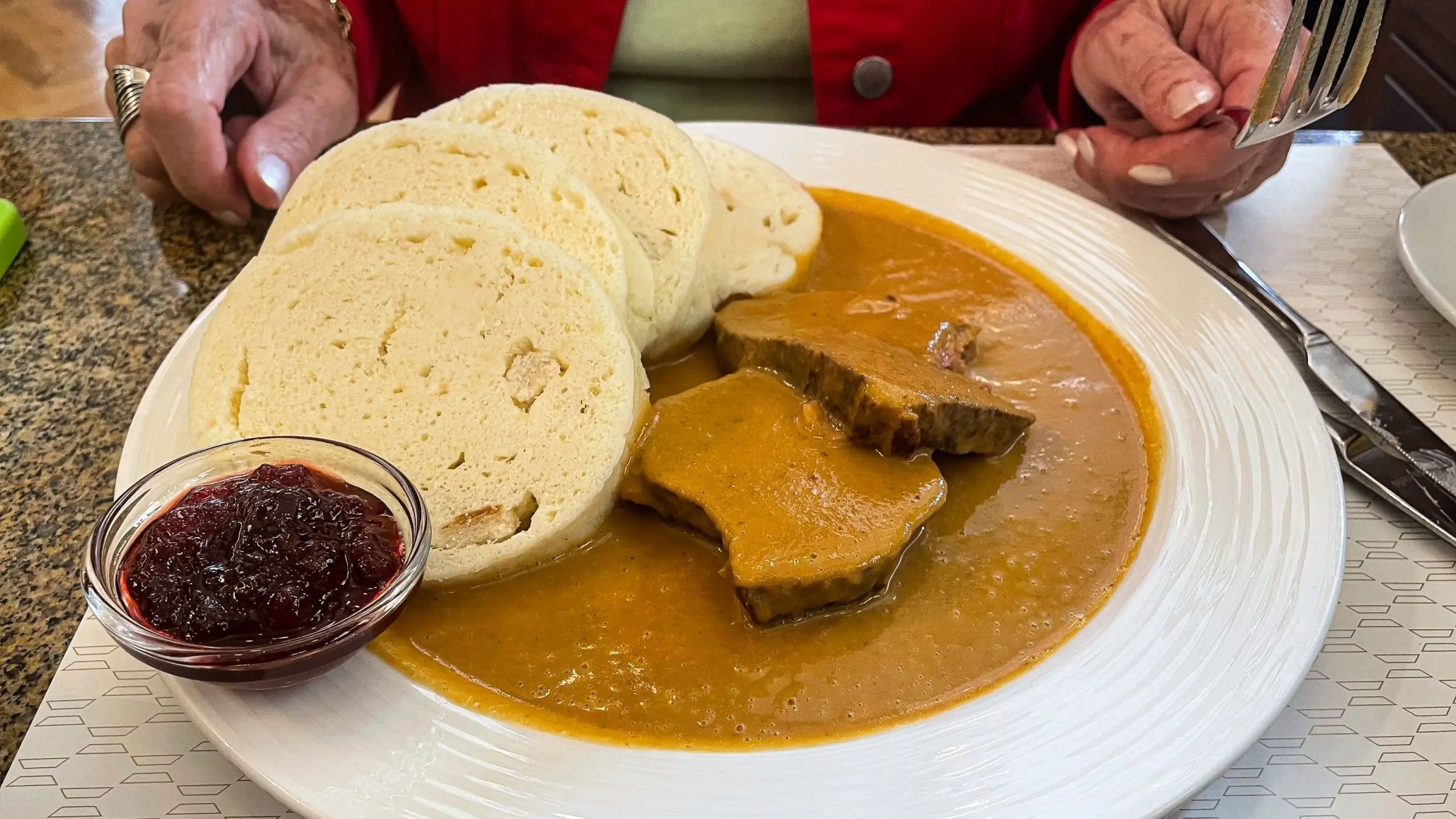
4. Guláš (Czech Goulash)
Although goulash is associated with the cuisine of Hungary and has indeed inspired countless copycat dishes, Czech Gulas stands out for its unique properties.
Czech goulash is a particularly thick stew made from beef or pork simmered in a mixture of onions, paprika, marjoram, and garlic. In place of the usual bread dumplings, it may also be plated up alongside dark rye bread.
As a result of the recipe being tweaked to correspond to the local palate and ingredients, Czech goulash is less spicy than its Hungarian cousin.
Much like with Vepro Knedlo Zelo, Gulas is prepared slowly with emphasis on creating a rich taste that satisfies the most demanding appetites. Often garnished with a dash of horseradish, Gulas comes into its own during the colder months.
Gulas (pronounced goo-lahsh) rose to popularity during the Austro-Hungarian Empire and has since become a linchpin of Czech comfort food and pub cuisine. It’s yet another dish that pairs excellently with local beers. Gulas is commonly found in hospody in the Czech Republic and is notably popular in Prague.
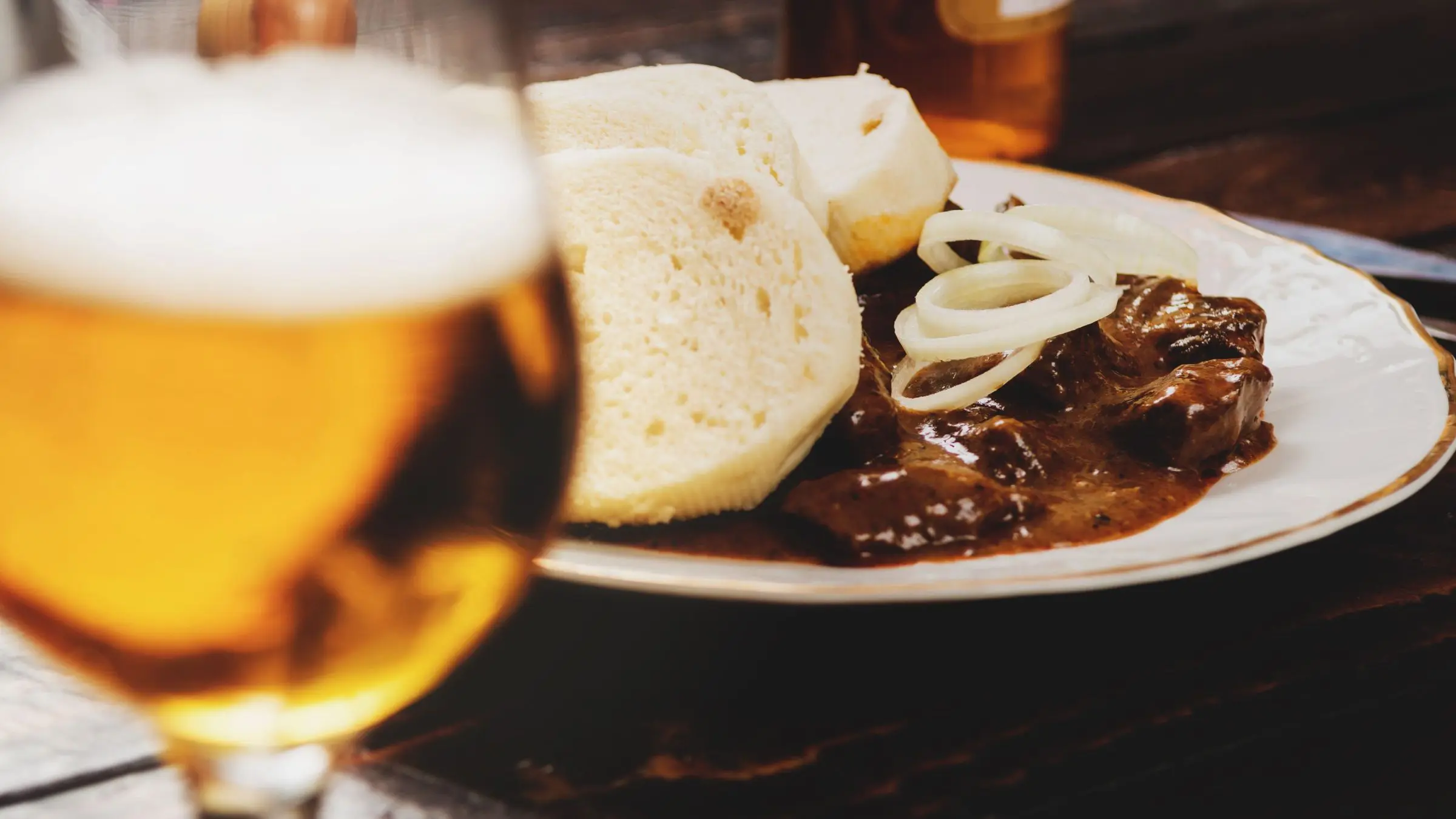
5. Becherovka (Herbal Liqueur)
Hailing from the spa town of Karlovy Vary, Becherovka is the Czech Republic’s signature herbal liqueur with an alcohol content of 38 percent. The beverage is often referred to as the 13th spring of Karlovy Vary, owing to the role it plays in local spa culture.
Becherovka (pronounced beh-kheh-rov-kah) was created in 1807 at the hands of pharmacist Josef Vitus Becher. His original recipe remains under lock and key, known to only two people at any given time. All we know for certain is that 20 herbs and spices contribute to the golden-hued liqueur’s bittersweet taste.
Among these, you will taste notes of cinnamon, anise, clove, and ginger. Hazarding a guess at the remaining 16 is all part of the fun when tasting Becherovka.
Becherovka was introduced as a digestive tonic, or a stomach remedy. Residents of Karlovy Vary still swear by its medicinal properties and sip the potion on the regular. As tourism has evolved, Becherovka has also made an appearance in cocktails. The Beton is a simple concoction of Becherovka and tonic water.
These days, the liqueur is available throughout the country. However, the Becherovka Visitor Center in Karlovy Vary is the go-to place for learning about the enduring drink’s history, legacy, and production process.

6. Česnečka (Garlic Soup)
If you have one too many pilsners or overdo the Becherovka, you’ll want to seek a bowl of Cesnecka (pronounced chess-nehch-kah). This is a bold and restorative garlic soup known to keep seasonal colds at bay and work like a charm on hangovers.
Made from a clear chicken or beef-based broth, the recipe for Cesnecka goes all-in on the garlic and features diced potatoes and marjoram for sustenance and taste. Pieces of smoked sausage or ham are occasionally added. However, the garlic alone packs in plenty of flavor.
Czech garlic soup is usually topped with croutons and shredded cheese. Historically, it was a pauper’s meal with low-cost ingredients and an easy preparation method.
This is also a rather nostalgic dish which summons childhood memories of grandmothers whipping up a pot of Cesnecka to banish ailments. The soup is most popular in Moravia and eastern Bohemia, where the majority of pubs keep it on their menu all year.
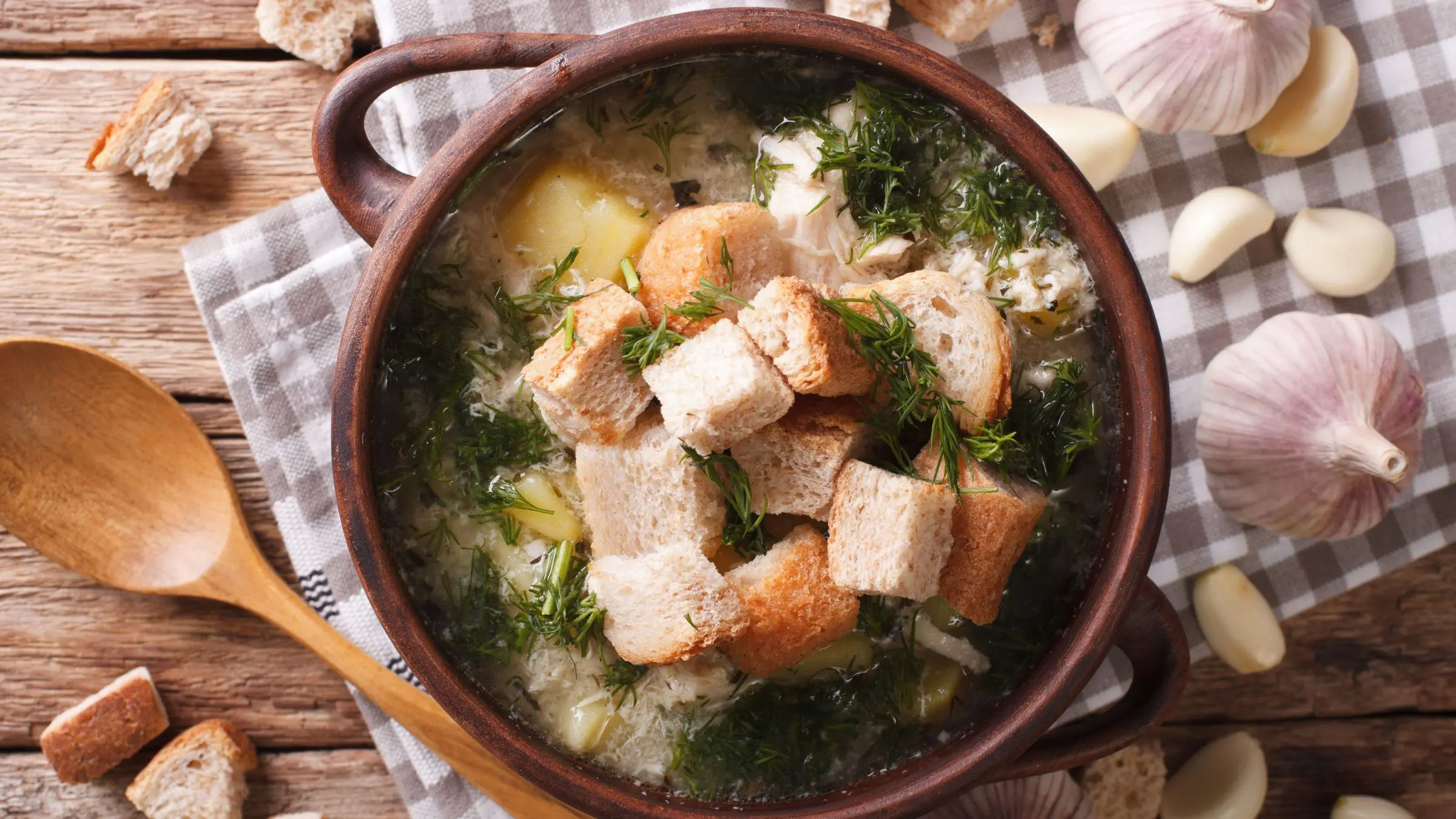
7. Smažený Sýr (Fried Cheese)
Pronounced sma-zhen-ee seer, Smazeny Syr is the best food in the Czech Republic for a classic comfort food experience. This simple yet indulgent dish holds a special place in Czech culinary culture, popping up everywhere from hospody and restaurants to school canteens, street food stalls, and ski resorts.
Smazeny Syr sees a thick slab of semi-hard cheese (the Czech-style Camembert, Hermelin, is preferred) breaded and deep-fried until it has a golden crust and a gooey interior.
It is served with tartar sauce (Tatarska Omacka), a wedge of lemon, and either boiled potatoes or French fries. For those on the move, it is offered on a bread roll.
Emerging during the 20th century, Smazeny Syr was considered a Czech twist on schnitzel. It’s also one of the rare vegetarian-friendly Czech foods. This fried cheese delicacy kindles childhood nostalgia in locals and is known to tourists for its addictive properties.
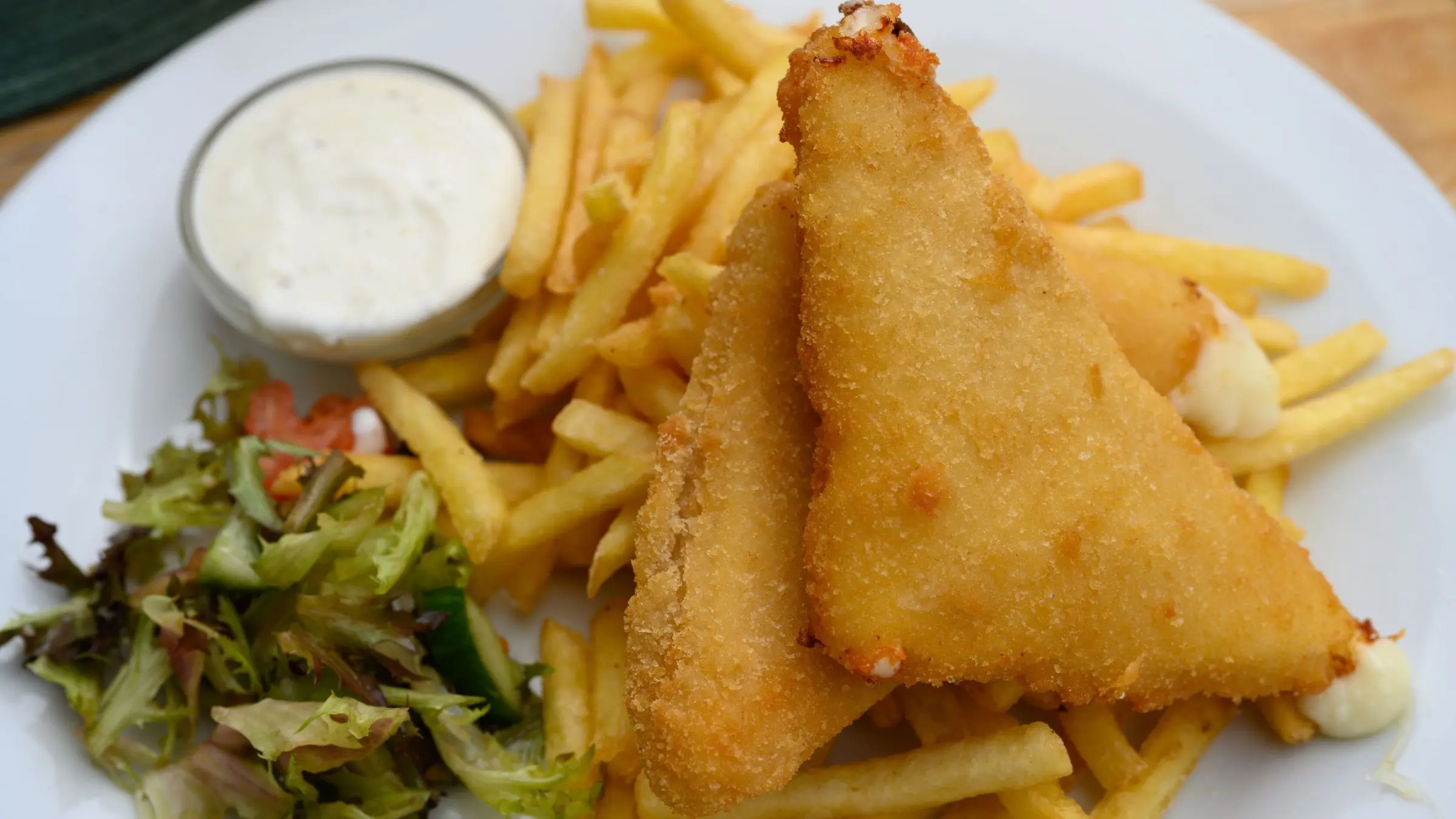
8. Pilsner Urquell (Pilsner Beer)
Beer is the Czech Republic’s national drink, and credit goes to Pilsner for blazing the trail. This golden lager hails from the town of Plzen (Pilsen) in western Bohemia, where the Bavarian brewmaster Josef Groll perfected his recipe for Pilsner Urquell in 1842.
Groll’s end result was deemed revolutionary: this clear, crisp beer carried a balanced bitterness which contrasted sharply with the heavier beers of the time.
Groll’s ingredients (soft Pilsen water, Saaz hops, Moravian malt, and lager yeast) informed the blueprint for lagers worldwide and established Pilsner as a generic term for this type of beer.
Teaming well with most of the best food in the Czech Republic, Pilsner beer has become a cultural cornerstone of the travel experience. It’s widely consumed in hospody, local restaurants, bars, and at home.
Czechs are incredibly proud of their brewing heritage, as seen by their consistency as one of the highest per-capita beer consumers globally. To taste Pilsner Urquell at its freshest, you can visit the historic brewery in Pilsen and sip it unfiltered from the oak barrels.

9. Trdelník (Chimney Cake)
Pronounced tr-dell-neek, Trdelnik is a popular sweet street food, which is widely available in Prague and the star of festive markets around the country. However, as this sweet treat actually has its roots in Hungarian and Slovak cooking traditions, many locals do not consider it authentically Czech.
Chimney cake sees a sweet yeast dough wrapped around a cylindrical spit, which is then grilled over open flames before being coated with sugar, cinnamon, and nuts. Some takes on the recipe see Trdelnik filled with ice cream or chocolate.
Despite its mixed origins, Trdelnik is unquestionably delicious and emblematic of modern Czech food culture. It is especially popular in Central Bohemia and other popular places to visit in the Czech Republic, such as Karlovy Vary.
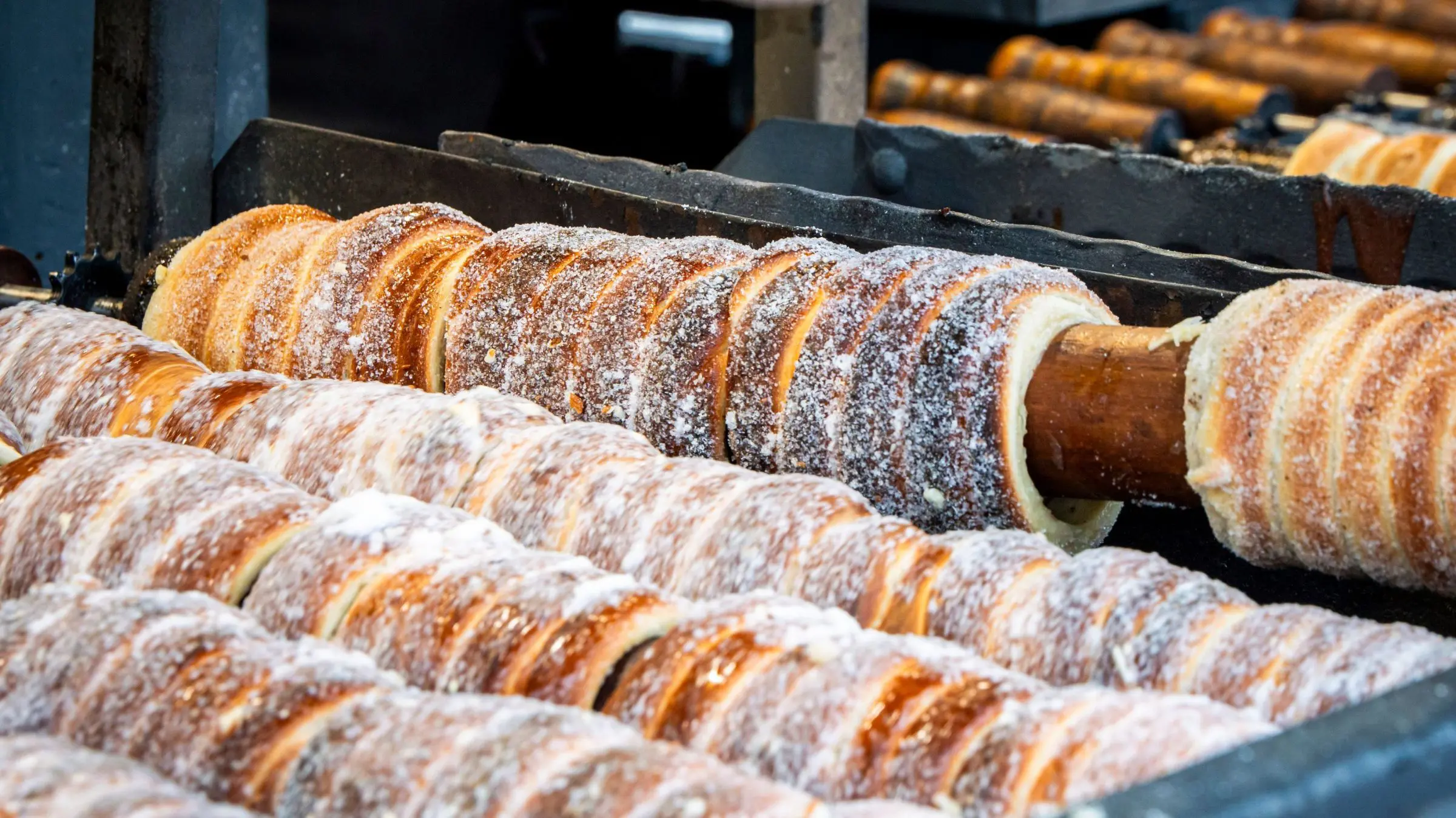
10. Bramboráky (Potato Pancakes)
Pronounced bram-boh-rah-kee, Bramboraky are savory Czech potato pancakes. They’re made from a mixture of grated raw potatoes, flour, garlic, marjoram, eggs, and salt, then pan-fried until crispy and golden brown.
As with other typical Czech Republic dishes, scraps of sausage meat are sometimes added for additional protein and taste. Otherwise, Bramboraky are found as an accompaniment to roasted meats.
Bramboraky have deep roots in rural Bohemia and Moravia, where potatoes have been a dietary cornerstone for centuries. They’re often eaten at fairs, markets, and other village happenings. Their garlicky aroma never fails to summon a crowd.
Bramboraky are served with either a scoop of sauerkraut or a dollop of sour cream to bring out the crunchy texture.
In some regions, Bramboraky go by different names, or slang terms, such as Cmunda or Vonave Placky. However, the ingredients and preparation are much the same.
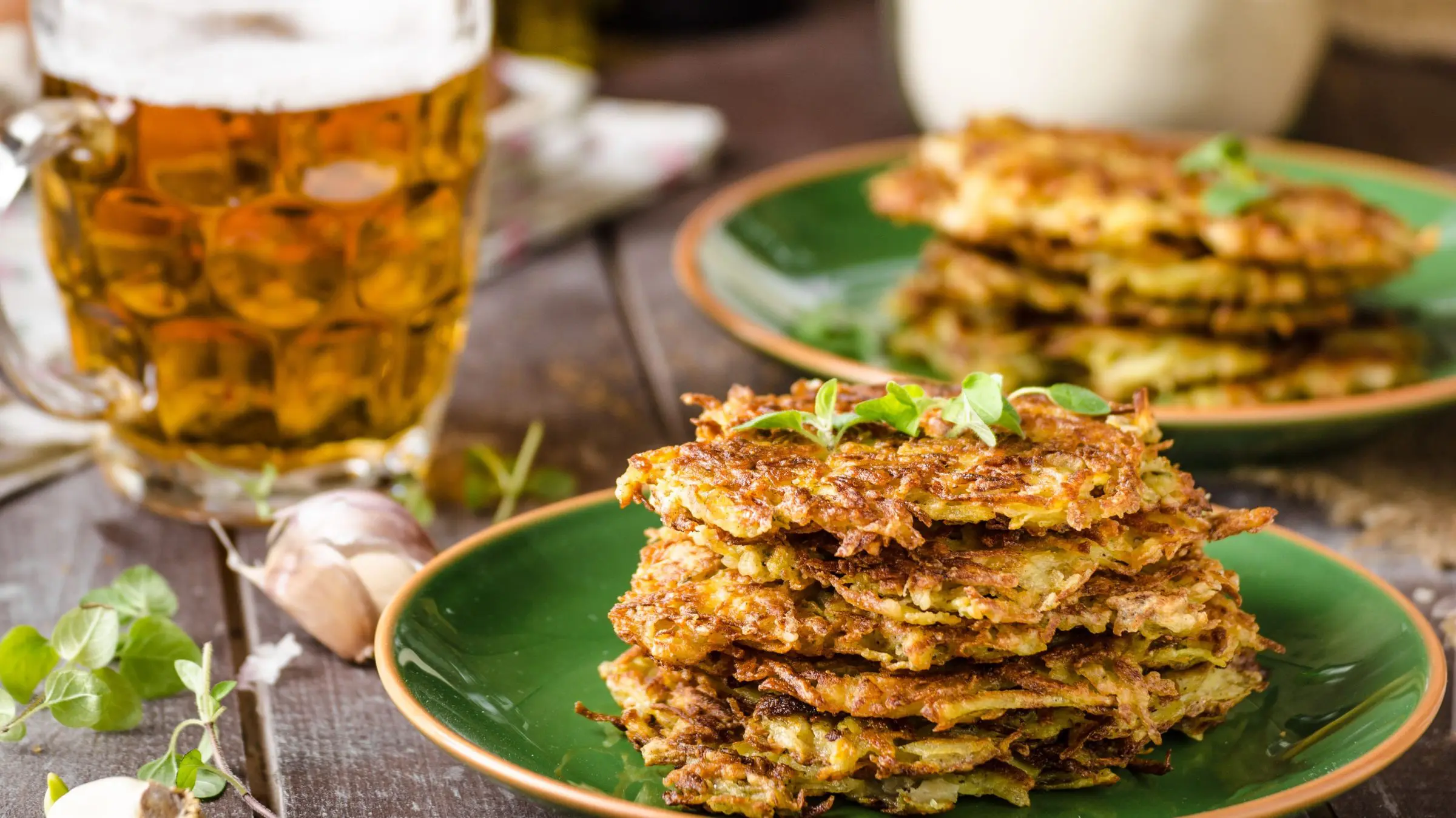
11. Pečená Kachna (Roast Duck)
Pecena Kachna (pronounced peh-cheh-nah kahkh-nah) is a celebratory Czech dish that is generally reserved for weddings, milestone events, and family gatherings.
The duck is first seasoned with salt, caraway seeds, and marjoram before being slow-roasted on a low heat until the skin is crispy and the meat tender. It is traditionally served with red or white cabbage and bread or potato dumplings.
Although common in all regions, Czech roast duck is most typical in the rural areas of South Bohemia and Moravia.
In fact, it’s a favorite of fall and often prepared in conjunction with wine harvest events, seen as a good reason to crack open a bottle of Moravian white wine. Roasted duck (or goose) is also used to honor the feast day of Saint Martin on November 11th.
Designed to be shared, roast duck is considered an antidote as the weather draws crisper and the days fall shorter. It showcases the Czech appreciation of slow-roasting meats and the balance of sweet-and-sour accompaniments.
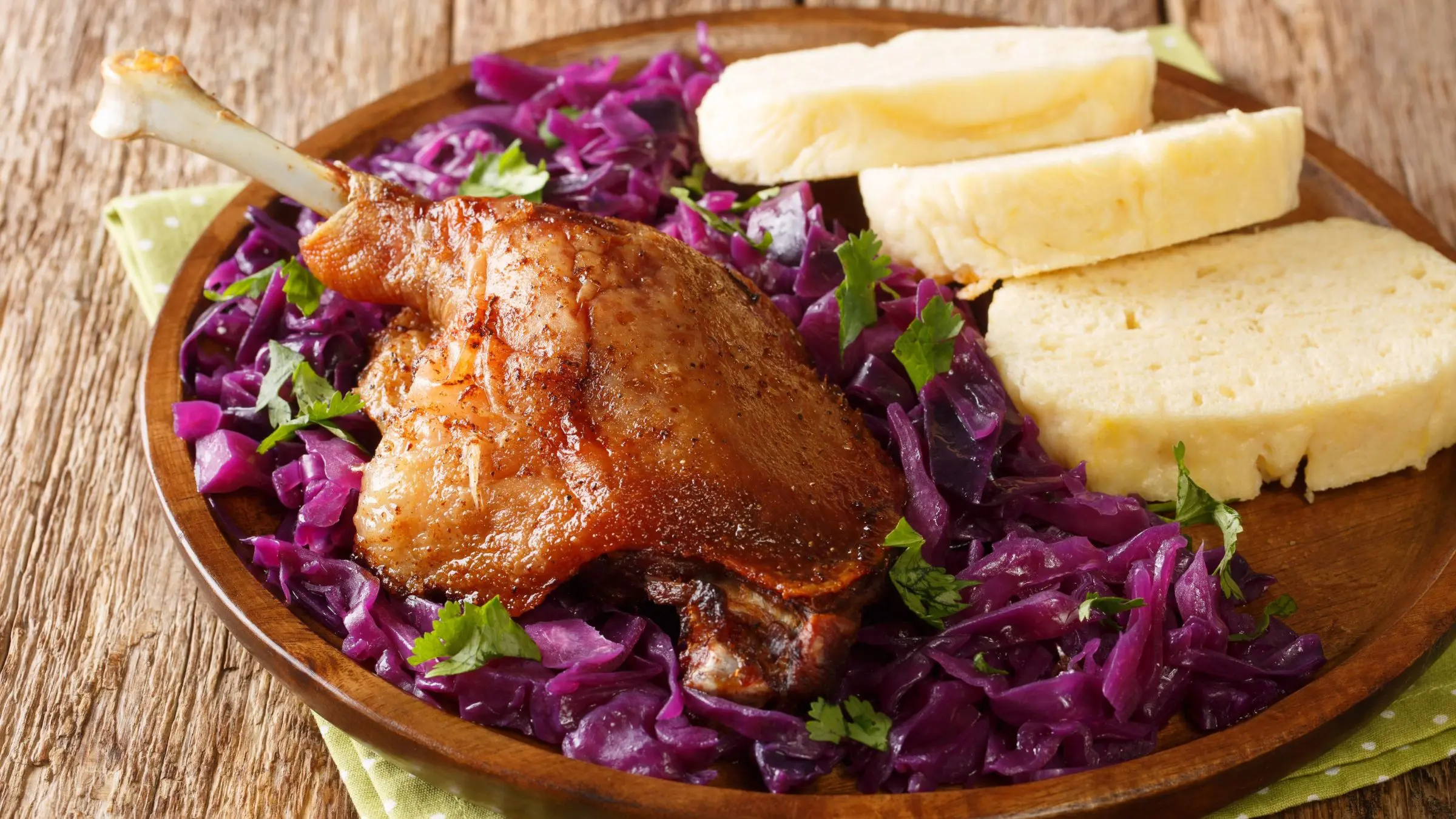
12. Koláče (Czech Sweet Pastries)
Pronounced koh-lah-cheh, Kolace are one of the best food items in the Czech Republic for those with a sweet tooth.
These traditional Czech pastries are filled with such sugary ingredients as fruit jam, cottage cheese, plum butter, and poppy seeds. The dough used for making a Kolac is yeasted and slightly sweet, often topped with streusel (crumble).
Widespread in bakeries across the country, Kolace symbolize hospitality and are often offered to guests in Czech houses or rural lodges. They are synonymous with South Moravia, where pastry chefs remain loyal to traditional baking techniques and speak of the importance of preserving passed-down recipes.
These pretty baked delights are often spotted at weddings, festivals, and celebrations. Sizes range from small round Kolace for one to larger sheet-baked versions for splitting and sharing.
Nowadays, Kolace are prevalent in Czech immigrant communities around the world. In the Czech Republic, the preparation of Kolace remains tied to family rituals and the agricultural calendar.
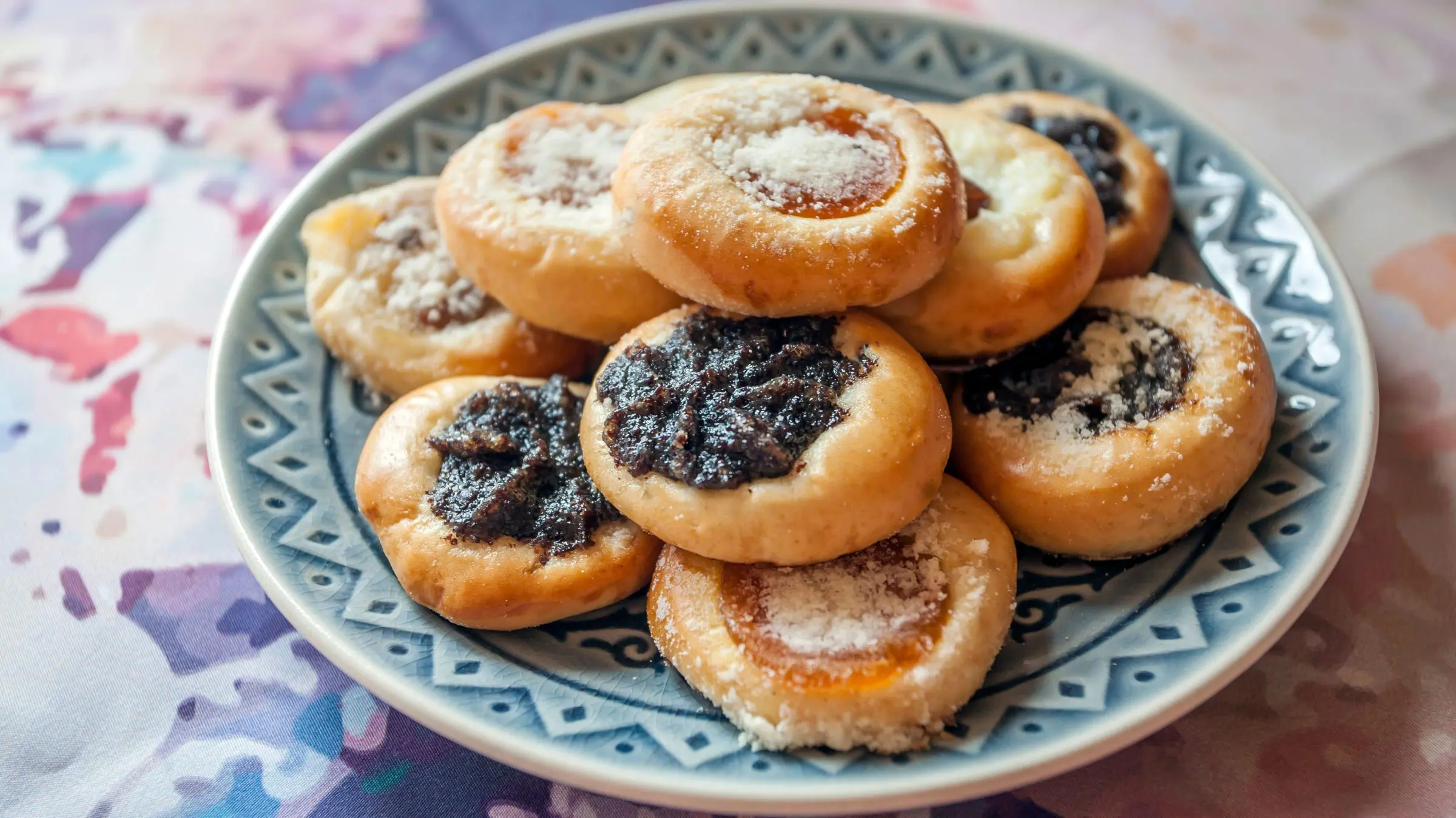
13. Utopenec (Pickled Sausage)
Utopenec (pronounced oo-toh-peh-nets) is the best food in the Czech Republic to order at a hospoda alongside a glass of Pilsner. A firm favorite of Bohemia, this pickled sausage snack is served cold with onions and vinegar.
It is typically made with Spekacek, a thick, fatty sausage, which is marinated with garlic, black pepper, bay leaves, and chili to produce a satisfying tang.
The name Utopenec translates into the drowned man because of the image of sausages drowning in a jar of brine.
According to local tittle tattle, it was named after a pub owner who drowned in a barrel while preparing Utopenec. While this is likely a myth, the story makes for a great icebreaker while traveling around rural parts of the Czech Republic.
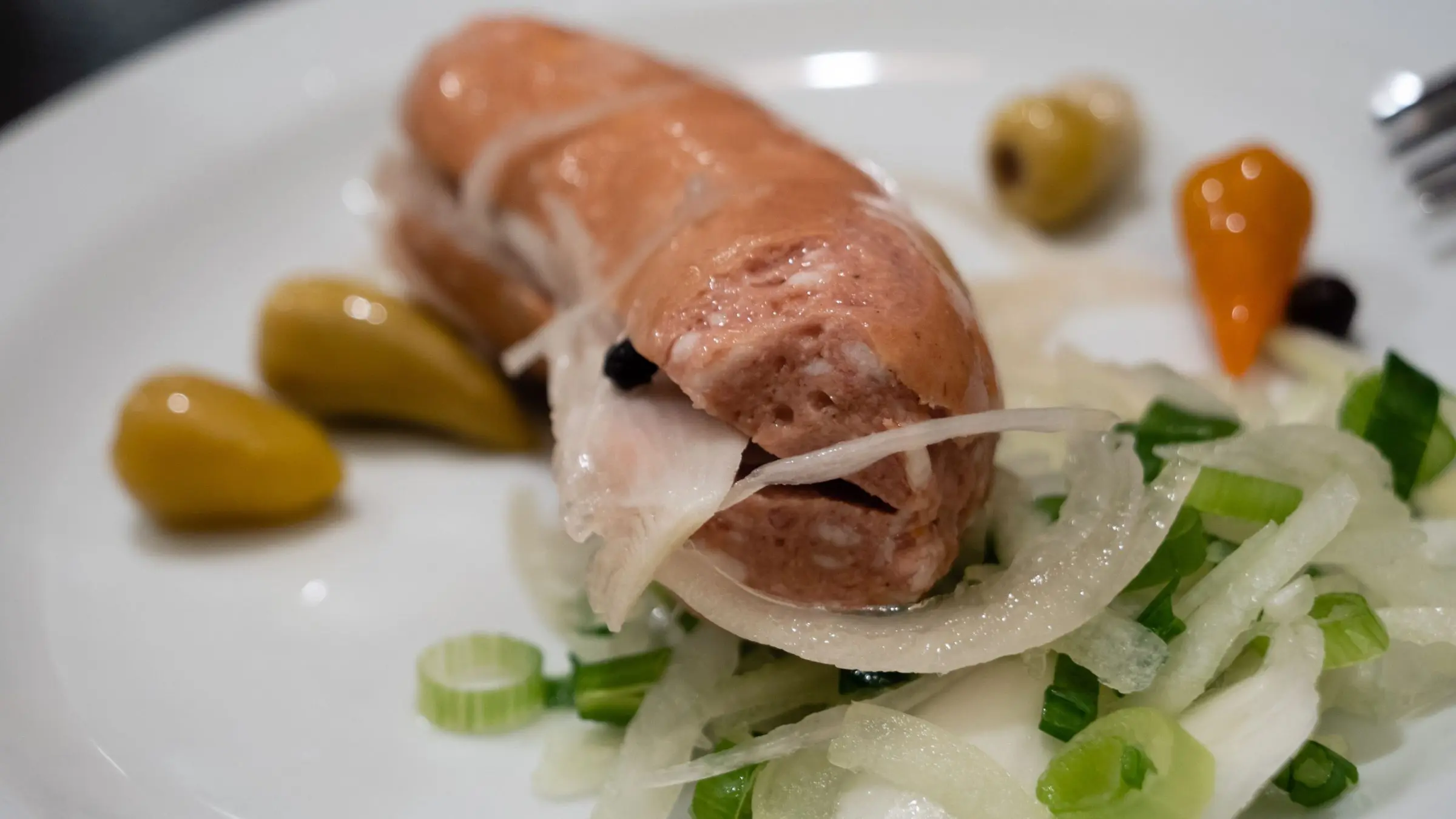
14. Tatarák (Beef Tartare)
Tatarak (pronounced tah-tah-rahk) is a Czech pub delicacy made from high-quality raw beef.
The meat, usually sirloin or tenderloin, is finely minced before being mixed with raw egg yolk, garlic, mustard, vinegar, finely chopped onions, capers, paprika, and ground black pepper. It’s served with garlic-rubbed toasted bread or Topinky (fried rye bread).
Czechia’s take on beef tartare was inspired by French tartare. While similar, the ingredients vary. The Czech Republic’s Tatarak is heavier on the garlic, and the end result is less herbaceous.
Although quality is always key, the Czech version uses a coarser cut of meat. This produces a more rustic dish, making Tatarak a signature of Czech pubs as well as fine dining establishments.
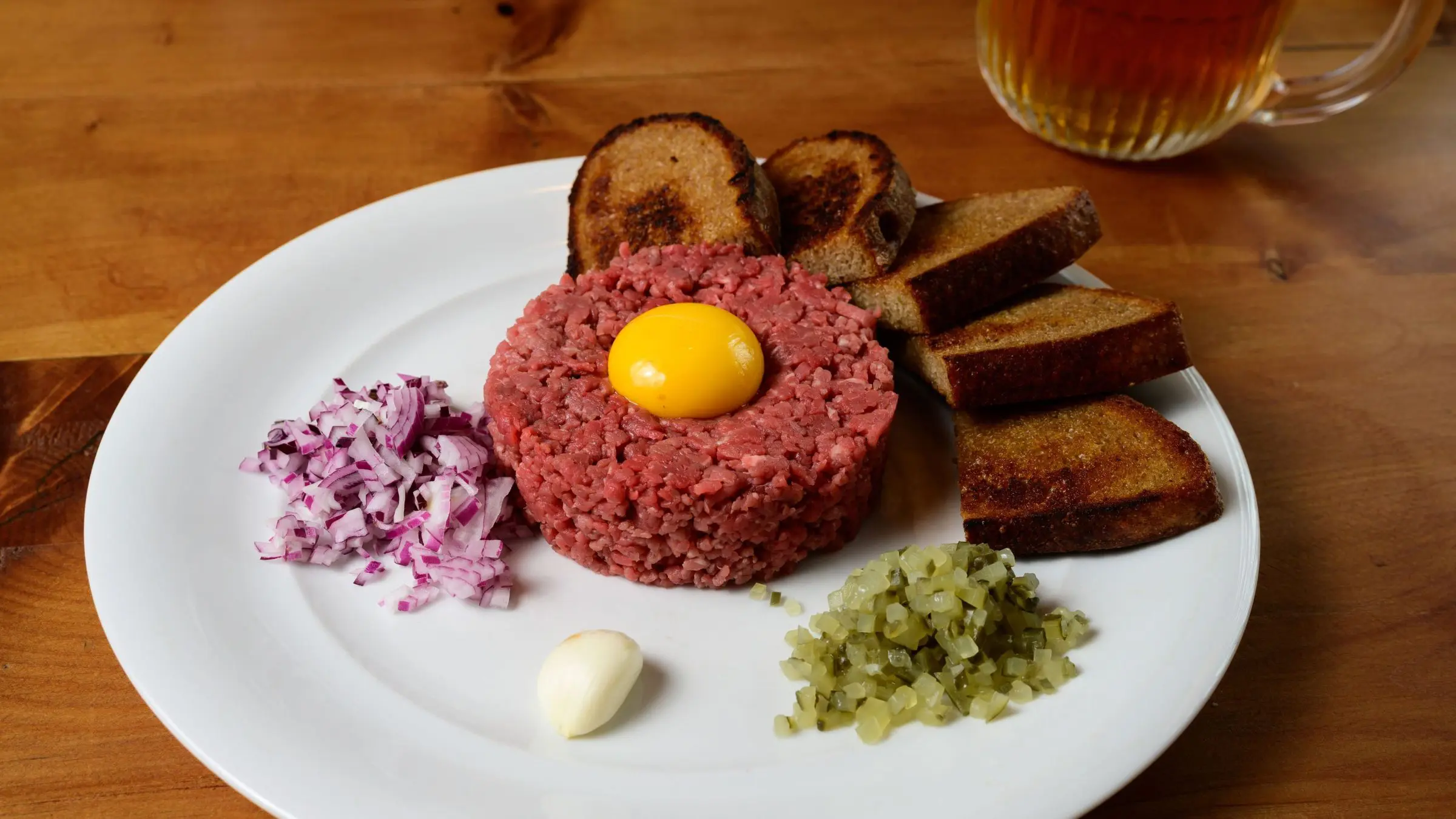
15. Ovocné Knedlíky (Fruit-Filled Dumplings)
Ovocne Knedliky (pronounced oh-vohts-neh knehd-lee-kee) are sweet, boiled dumplings made from a potato or yeast-based dough. They are stuffed with fresh seasonal fruit such as strawberries, apricots, plums, or blueberries.
After being boiled, Ovocne Knedliky are topped with melted butter and powdered sugar or sometimes grated Tvaroh (curd cheese) or poppy seeds. This combination of tart fruit and buttery-sweet toppings reflects the typical main courses of the Czech Republic.
These sweet fruit dumplings may be served as a main course or a tasty dessert, especially in the summer. They are beloved in pastoral South Bohemia, where fruit orchards are plentiful.
The tradition of baking Ovocne Knedliky goes back generations; many Czechs can recall picking fruit in their grandmother’s garden ahead of a fresh batch being whipped up. Light yet filling, Ovocne Knedliky are an example of how Czech cuisine blends savory and sweet in surprising ways.
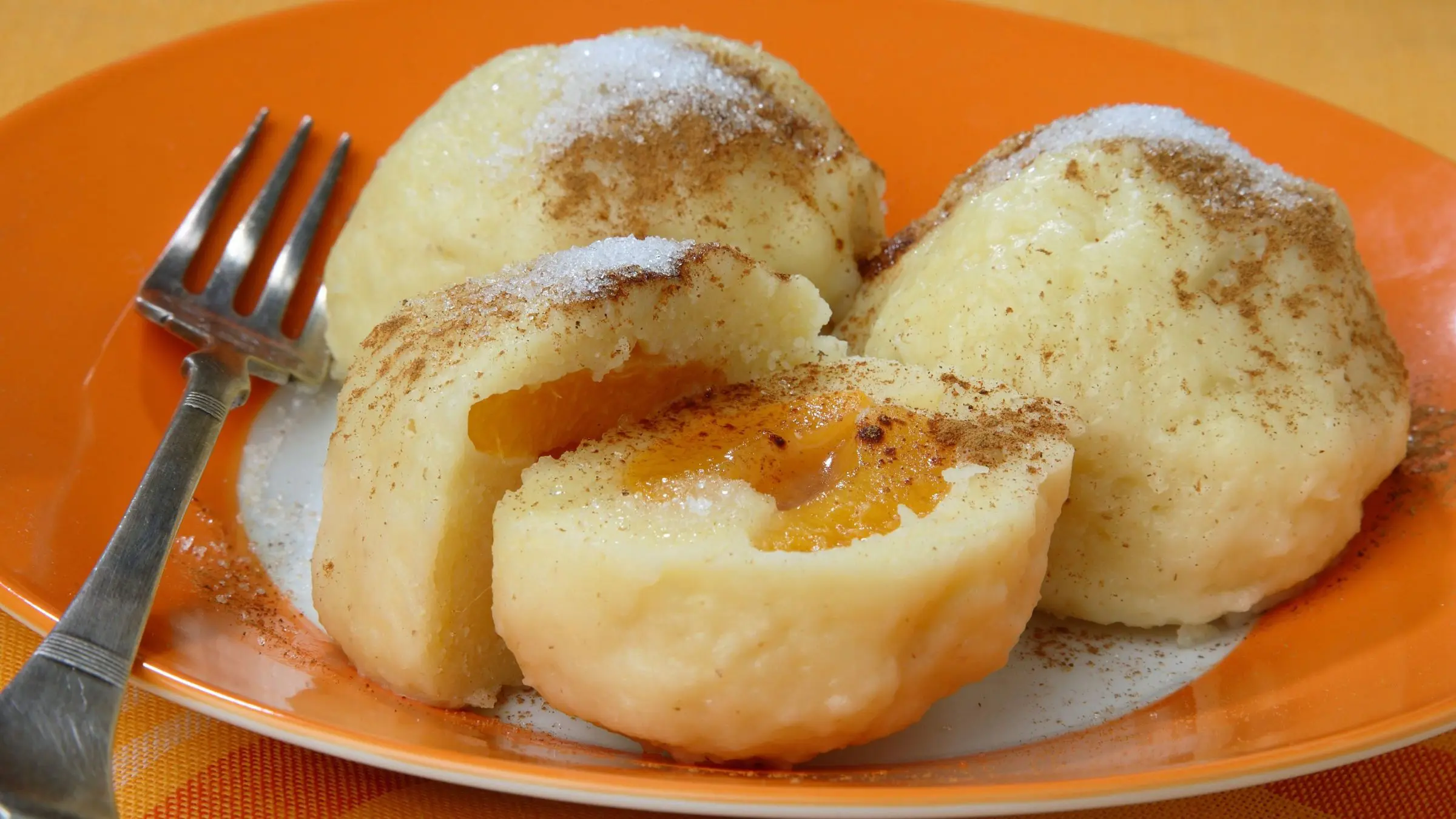
Explore Czech Cuisine With JayWay
A culinary exploration of the Czech Republic can never be a bad idea as long as you leave it in the hands of experts to craft the perfect Czechia itinerary for you.
Our trip planners and local staff on the ground are eager to share with you their personal recommendations about the best food in the Czech Republic and where to try it. Your passport to Central Europe’s gastronomy awaits, one phone call or email away.

Born and raised in Athens, Maria’s passionate about travel and storytelling, a combination that makes her ideal for her role as our content manager.